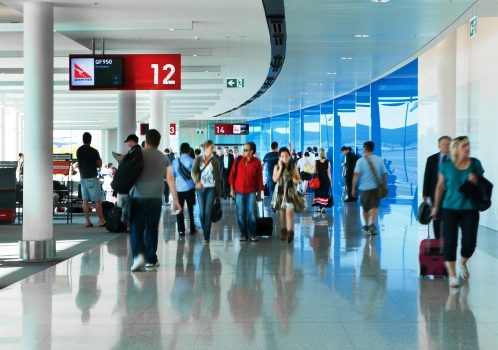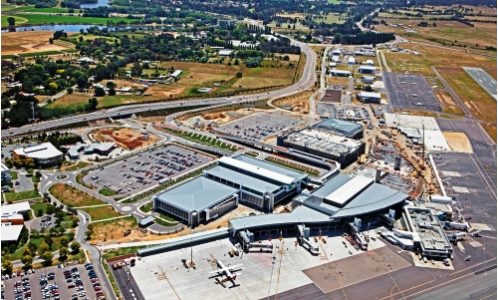It’s Australia’s national capital and the seat of its federal government. As one of the few planned cities in the world, it has beautiful surroundings and one of the best road networks in the land, yet there is one thing conspicuously missing from Canberra – international links. This is an enigma that the owners of Canberra ‘International’ Airport, Capital Airport Group, have been trying to redress since its privatisation in 1998, so far without success.
But plans are now in place for the Australian Capital Territory to claim its rightful place as an international gateway – a prize that is tangibly close. Why this is even an issue is rooted in a long-standing neighbourhood dispute. Popular theory has it that 100 years ago, when the decision-makers were choosing the site of the national’s capital, Sydney in New South Wales (NSW) and Melbourne in Victoria both cried “pick me!” but it was Canberra, the middleman, which was selected as a compromise. Yet in terms of airport development, the city was a late bloomer.
Melbourne’s first airport at Essendon, predecessor to the current Tullamarine site, opened in 1921. Sydney has been welcoming aircraft since 1911, when the first Bristol Boxkite biplane flew in. All Canberra had, until the 1960s, was an old military airstrip. So for years the international route to Canberra involved landing somewhere else, and taking a domestic flight or road trip to Sydney some 300km away, or Melbourne a whopping 650km. This might have been OK when we all had more time, but in 2012 it’s far from ideal.

To rectify this, operators have put in place “AirVolution” – a A$420 million infrastructure investment plan which they hope will usher in international flights and it’s already being rolled out. In November 2010, a new 50,000sqm Southern Concourse Terminal opened, while construction of the Western Concourse Terminal was launched in August the following year, both to be joined by a glass atrium. When fully operational in mid 2013, the focus will be, in the words of Stephen Byron, Canberra Airport’s Managing Director, “all on the passenger with new and additional airline lounges, new aerobridges, a doubling of the passenger screening area, more check-in counters, greater amenities and retail offerings, and with another four-storey car park providing completely covered access to the new terminals”.
The airport’s wholesale redevelopment includes the critical element of a new road system, allowing much greater access. “We’ve been positioning ourselves as Australia’s newest international airport built around an arterial hub of roads to and from. The new terminal is the last piece in the plan,” says Matthew Brown, Canberra’s Head of Aviation.
In total the airport and its immediate environs will see A$1 billion of investment over five years. And, for passengers and airlines alike, that day can’t come soon enough. Enhanced connectivity to the capital aside, Australia needs a second international airport in or around the Sydney catchment area – and Canberra is putting forward its case. Brown says this simply “makes sense”. “Canberra is the national capital, the seat of government, the home of national and world renowned institutions, and the gateway to the NSW Snowfields. It makes sense for airlines looking to draw from the wider population to operate a Canberra service,” he adds.
The local population itself offers a ready-made and potentially lucrative customer base. Canberrans are Australia’s biggest earners – taking home 16 per cent more than the national average – so their spending power is high. Add this to the already high-yield government and business travel sectors and you do the maths, as they say. “Airline economics is all about filling the front end of the plane, and the Canberra market does this very well,” comments Brown.
There’s also the financial funnel of Brindabella Business Park, a world-class cluster of modern and environmentally sustainable A-Grade office buildings developed on airport property. To date, the park houses 46 businesses employing 7,000 people and there’s scope to increase its size by 50 per cent. Inducements are not necessary when the business case stacks up, according to Brown, who points to the solid trunk that supports Canberra Airport’s rich top fruit. “We are coming off the fundamentals of a very strong economy. Airlines have the opportunity to build a market from day one, not hope to build on something that may or may not be there,” he says.
To get to this point, airport management tidied up its own backyard, “bedding down” all the routes it wanted for its domestic network. In February 2010 came the missing link – Qantas’s first direct service to Darwin. Now every state and territory capital had direct jet services to the national capital. “To be an international gateway, as well as being an origin and destination in its own right, an airport needs to be capable as acting as a domestic hub. Canberra can now offer airlines and passengers a full complement of domestic connections,” explains Brown.
A report now before the state and federal governments highlights a critical need for a second Sydney airport, with an estimated A$35 billion a year and 70,000 jobs forecast to be lost from the NSW economy by 2060 without extra capacity. As federal Transport Minister Anthony Albanese concludes, “Sydney needs a second airport sooner rather than later.” Canberra points out that they’re already here.
The airport argues that a high-speed rail link would “complete this picture and link people, businesses and services down the east coast of Australia, including the national capital – creating a major economic corridor of investment, industry and innovation”. Besides, adds Brown, Australia is one of only a handful of countries in the world where the national capital doesn’t act as an international gateway. “It is important that Canberra plays that role,” he says.
He estimates that New Zealand and South East Asian routes could be up and running by early 2013. Beyond that, there are “a myriad of opportunities”, with the next step likely to be the Middle East. “We are working actively to secure those (routes),” he says. “We’re putting money where our mouth is, and are confident we will see international services commencing shortly.”
So far, however, the airlines have been non-committal. Qantas says it currently has “no plans to launch international services to or from Canberra,” although it says this is something it “regularly reviews”. Virgin views Canberra as a “very significant” market in terms of corporate and government travel, adding that it is “constantly looking” at its network. Jetstar Airways, which currently doesn’t fly to Canberra, says it “is always investigating new routes and network options and partnerships”.

However, Qantas’ group executive commercial Rob Gurney, underscores Canberra’s value. “The Qantas Group operates over 250 return flights into and out of Canberra each week, offering the highest frequency of services between the national capital and Australia’s major cities,” he says. “Qantas and QantasLink both serve Canberra with a mix of Boeing 737, 767, Q400 and Q300 aircraft. The mix of aircraft types allows us to maintain a good balance between capacity and frequency, both of which are important to our customers. Canberra is an important route for Qantas and is integral to our domestic network offering.”
As it stands, Canberra Airport handles over three million passengers annually which is projected to double over 20 years. Three airlines – Qantas, Virgin and Brindabella – offer a total of around 848 flights a week, or 44,096 services weekly, to Australia’s urban and regional capitals. Of course, Canberra Airport’s own route thus far has at times been bumpy. When Ansett collapsed in 2001, it wiped out 45 per cent of the airport’s revenue in one fell swoop. “Gone, disappeared – with no prospects of recovering that,” says Brown. “It took the best part of a decade, but that gaping hole is now filled, with the airport a stronger business as a result,” he adds.
He believes a greater challenge was funding and implementing a A$1 billion redevelopment, and in this case without even building on a greenfield site – and that’s been overcome too. Much of the airport’s future aspirations now rest on a government decision. Management was buoyed by the Transport Minister’s recent “unequivocal” ruling out of the lifting of the curfew at Sydney’s Kingsford-Smith Airport – a result it says strengthens Canberra Airport’s role managing overflow from Sydney as it continues to grow. The airport has also always maintained that its aim is to complement, not compete with, Sydney or Melbourne.
“We do not expect to be formally named as a second Sydney airport at any time in the near future,” says Byron. However, as the only curfew-free 747-capable airport in NSW, Canberra will play “an increasingly critical strategic role in Australia’s national infrastructure, particularly where overnight freight is concerned.”
Hello world? It’s Canberra calling. Stand by for some good news.
This story appears in the latest issue of Routes News. A copy of the latest issue of the world air service development magazine is available to all delegates at Routes Asia.





